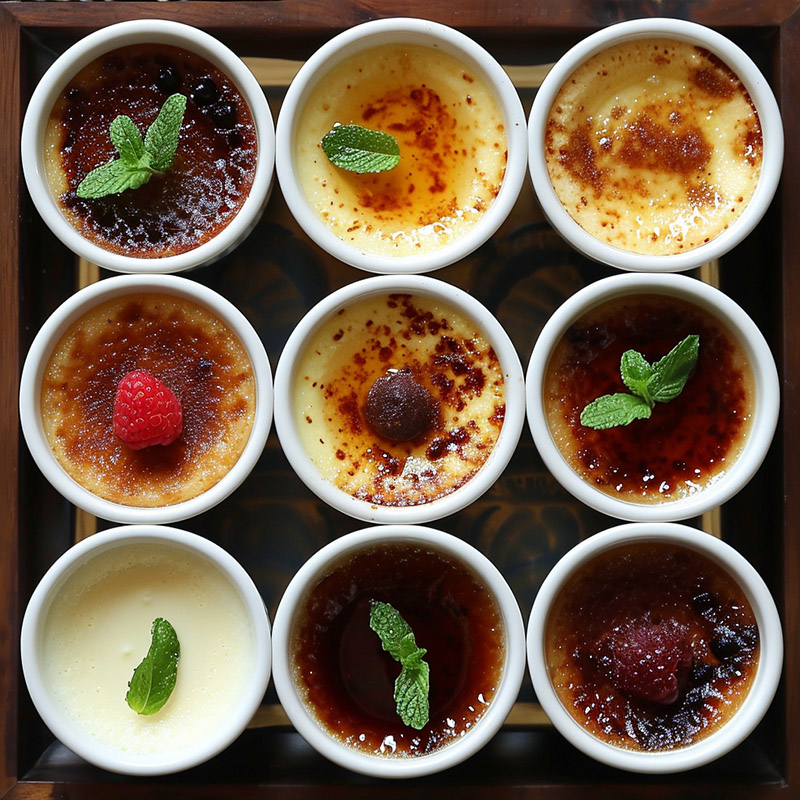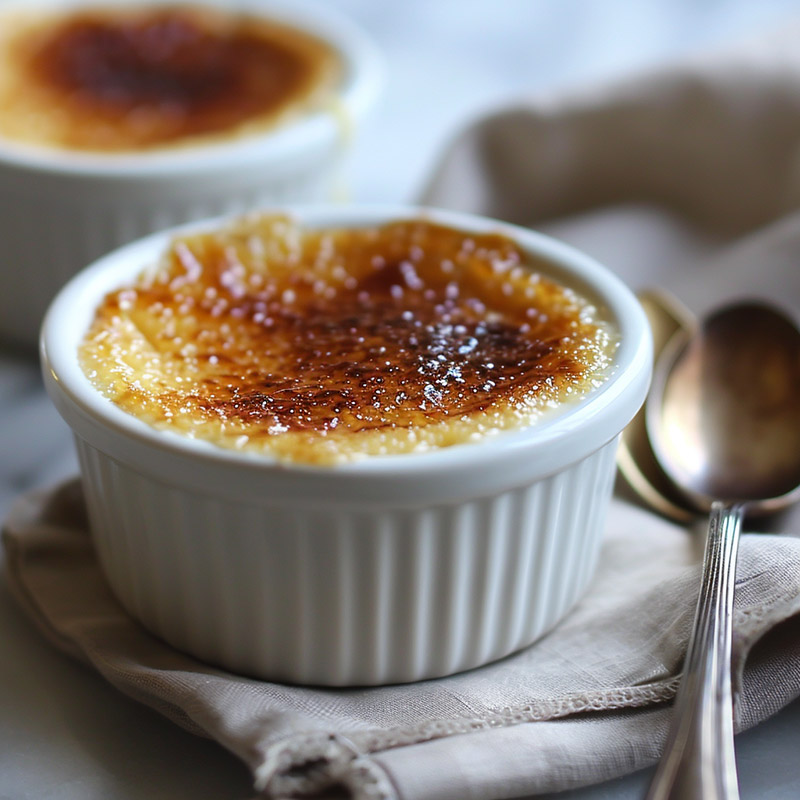
Crème brûlée, also known as burnt cream, is a classic French dessert known for its rich custard base and contrasting layer of hard caramel on top. Its origins are a subject of debate, with France, England, and Spain all claiming to have invented it. The name crème brûlée itself is French, translating to "burnt cream," which aptly describes the caramelized sugar topping.
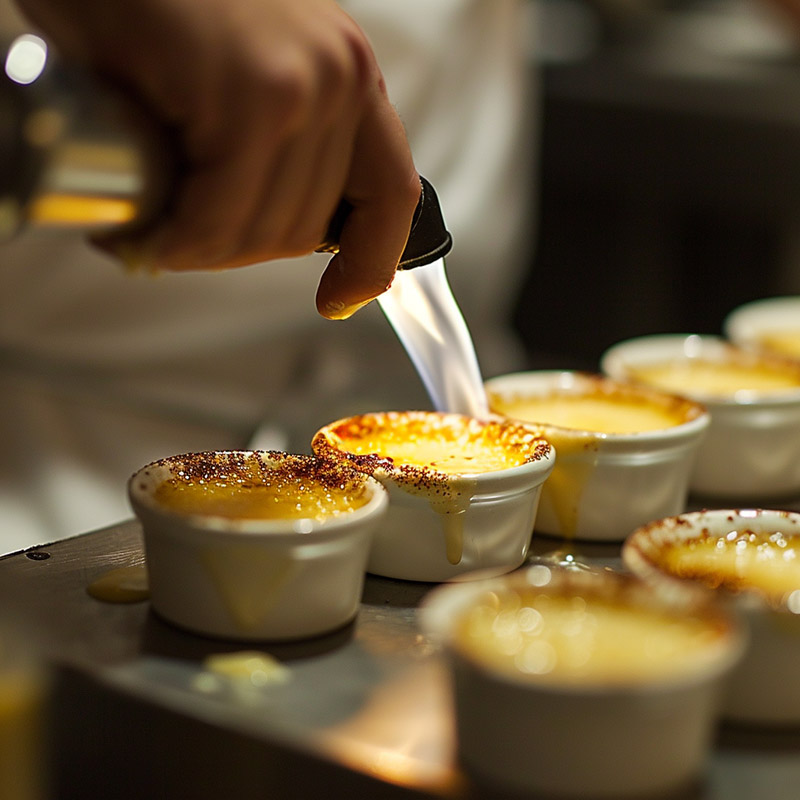
The base of crème brûlée is a simple yet luxurious custard, traditionally flavored with vanilla. It's made with heavy cream, egg yolks, sugar, and vanilla. The cream is heated, and then the egg yolks and sugar are whisked together. The hot cream is then gradually added to the egg yolk mixture to create a smooth, creamy custard. The key is to do this slowly to prevent the eggs from curdling.
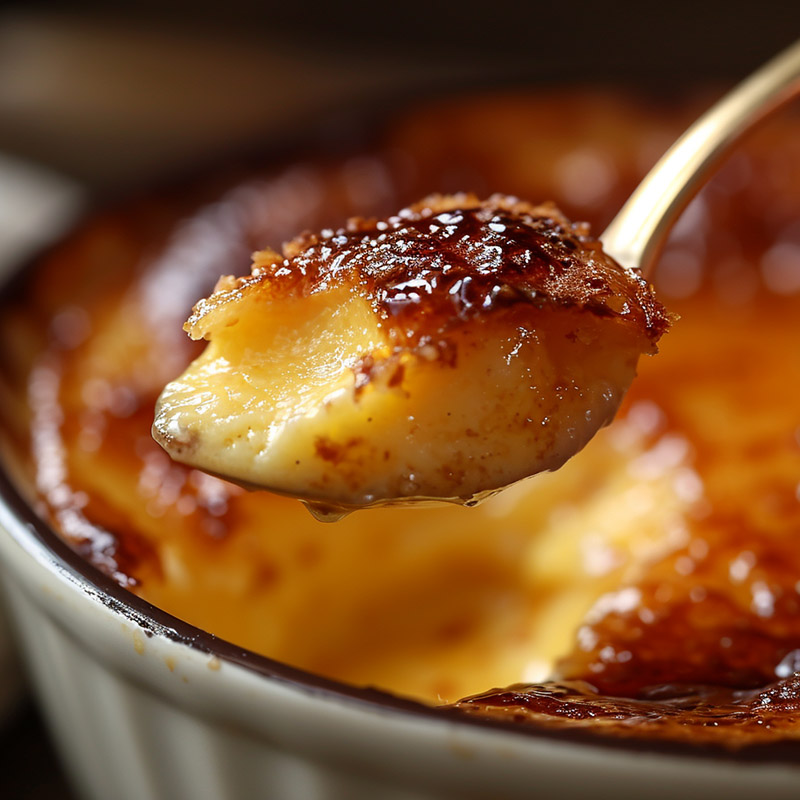
Once mixed, the custard is poured into ramekins and cooked in a bain-marie (water bath) in the oven. The water bath ensures even cooking and a silky texture in the custard. The custards are baked until they are just set but still a bit wobbly in the center. After baking, the custards are cooled and then refrigerated for several hours to set completely.
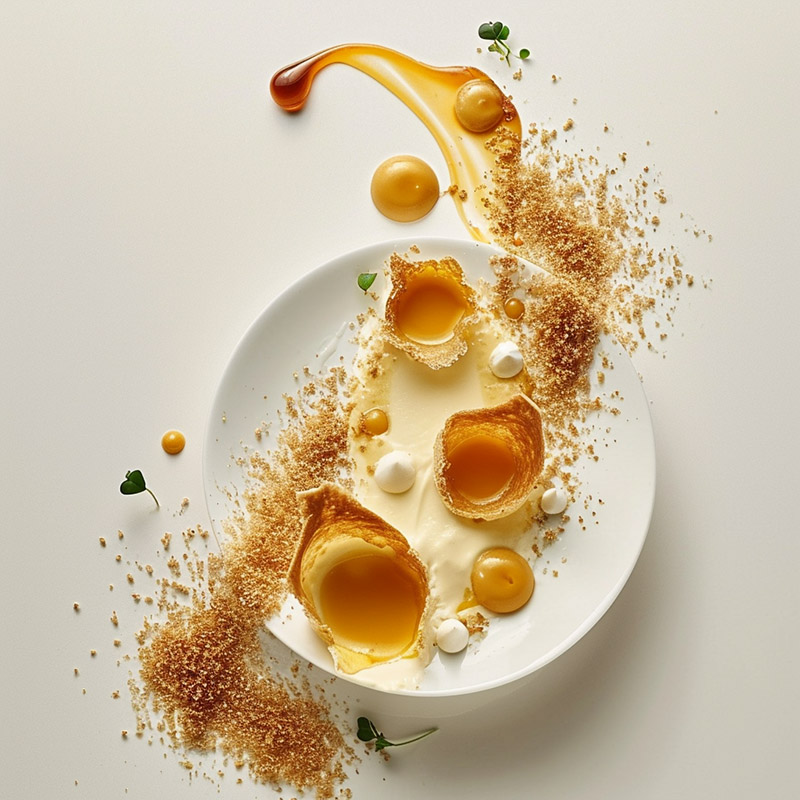
The defining feature of crème brûlée is its caramelized sugar topping. Just before serving, a thin layer of granulated sugar is sprinkled evenly over the surface of the chilled custard. This sugar is then caramelized using a kitchen torch or by placing the ramekins under a broiler. The sugar melts, bubbles, and turns into a rich, golden brown caramel, forming a crisp layer on top of the custard.
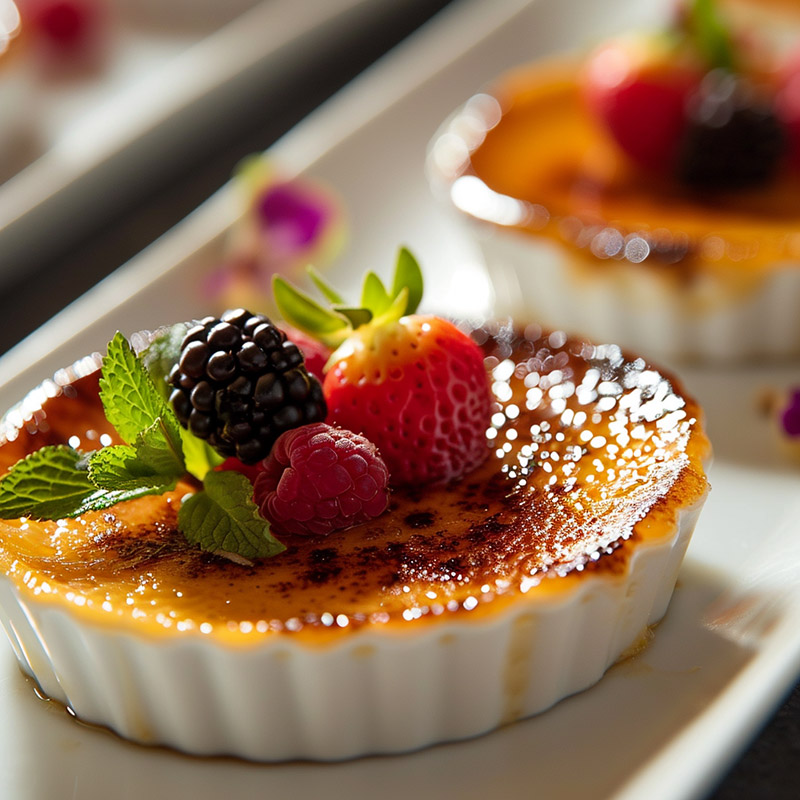
The contrast between the cold, creamy custard and the warm, crisp caramel is what makes crème brûlée so delightful. To serve, the caramelized top is usually cracked with a spoon, revealing the smooth custard beneath.
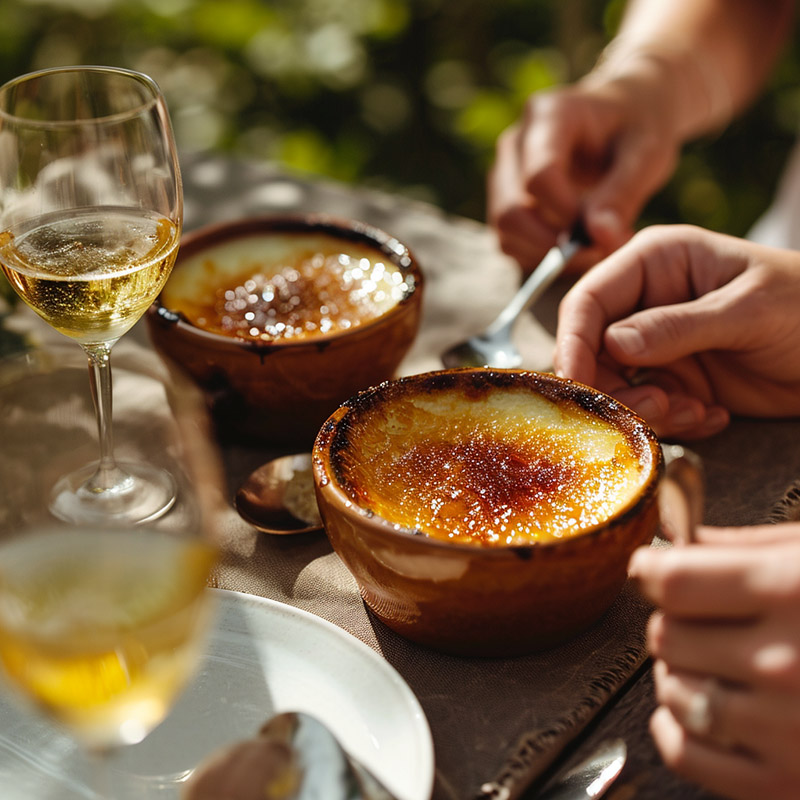
Crème brûlée is often seen as a symbol of elegance in dessert cuisine, and it's a staple in fine dining restaurants. While the classic vanilla flavor is the most traditional and popular, there are numerous variations, including adding fruit purees, chocolate, coffee, or liqueurs for different flavors.
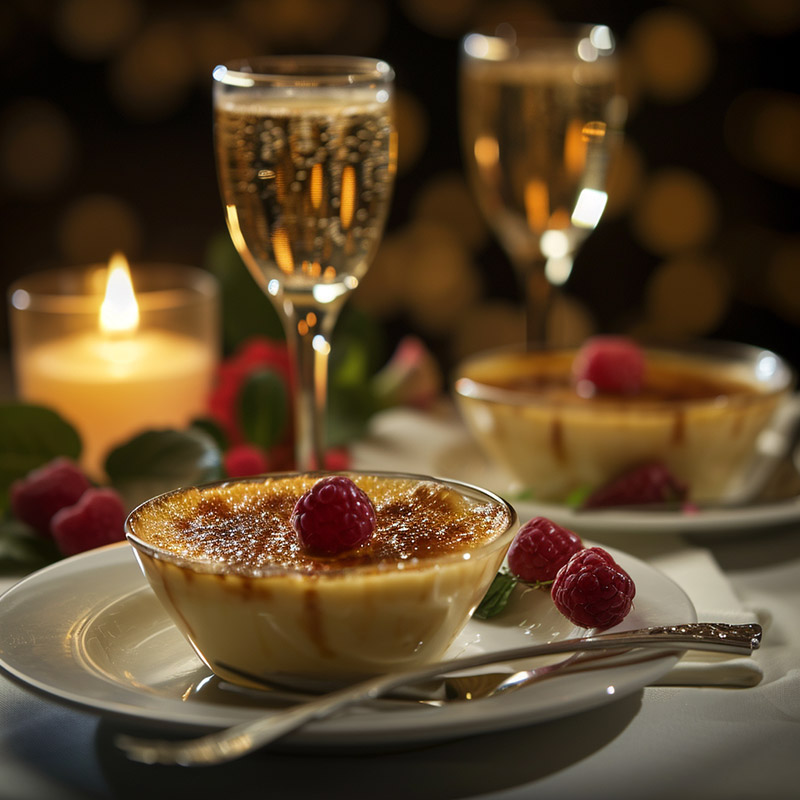
Nutritionally, crème brûlée is rich and indulgent, high in calories, fat, and sugar. It's typically enjoyed as a special treat rather than an everyday dessert.
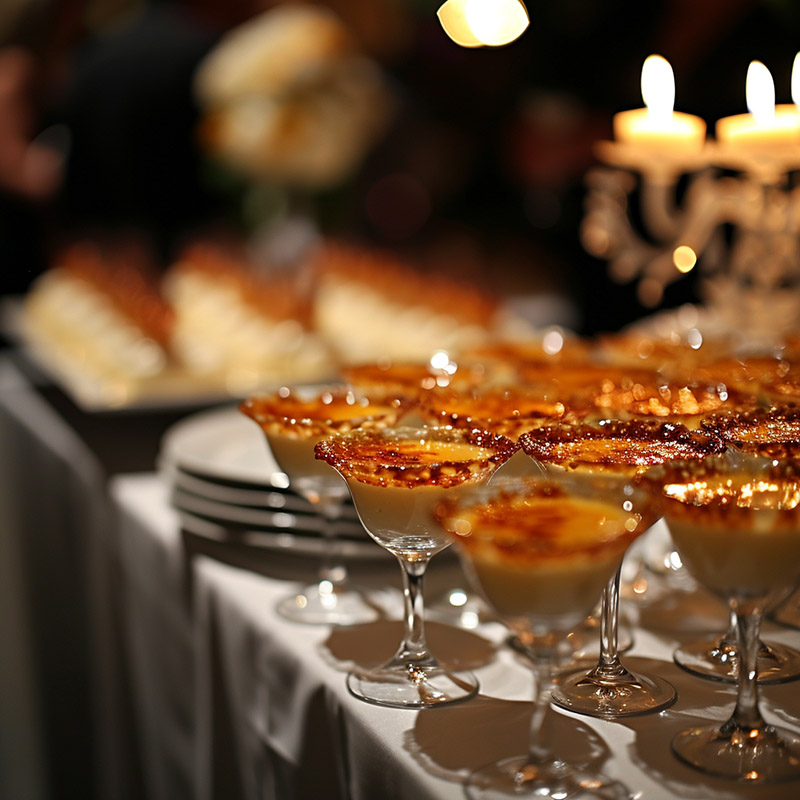
In conclusion, crème brûlée's enduring popularity lies in its simplicity, the perfection of its texture, and the dramatic contrast of flavors and temperatures. It's a testament to the sophistication of French cuisine and its ability to turn basic ingredients into an exquisite culinary experience.
